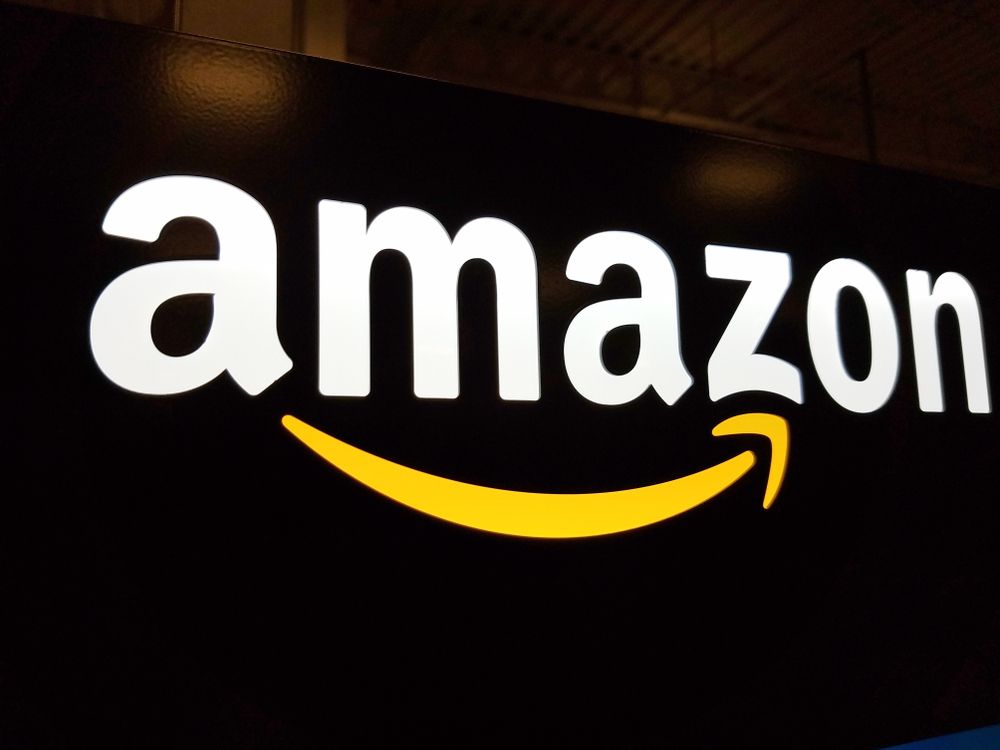Stablecoins provide corporations with the best of both worlds: a stable means of transacting fiat-based value on the blockchain. It’s no surprise then that many major corporate conglomerates are now investigating stablecoins, some even with the hopes of releasing their own.
Previously, BeInCrypto dove into the world of central bank digital currencies (CBDCs). Countries like China, France, Sweden, Turkey, and many others have been racing to develop their own central bank-issued stablecoins. As we covered in that in-depth article, the idea will greatly impact the world’s geopolitical balance in the decades ahead. CBDCs provide states with a means of circumventing the dollar while also offering fast speeds and easy integration into digital financial infrastructure. China is currently leading the push with the hopes of leveraging its own state-backed stablecoin to undermine the dollar’s dominance.
Corporate-backed stablecoins are less discussed, but similar in scope. Big businesses are working behind-the-scenes to issue their own stablecoins to get an edge in the market. Although this sector seems to be a few years behind CBDCs, such ideas are already in the first phases of production.
Because the idea holds significant promise, BeInCrypto decided to investigate. Let’s look at the potential of this niche corporate sector and what it might look like in the years to come.
The World of Corporate Stablecoins
The world of stablecoins bears some resemblance to ‘eurodollars’ which emerged onto the scene in the 1970s. Eurodollars are essentially a catch-all term for dollars held in reserves outside of the United States (not just in Europe as the name suggests).
SponsoredPetroleum sales, for example, have historically been priced on the world market in dollars. Since the 1970s, most nations began to stockpile dollars in growing amounts. Expectedly, eurodollars are now a staple of the world economy and have cemented the dollar’s place as the world’s dominant currency.
Today, stablecoins can be called ‘eurodollars lite,’ and exist on a blockchain. They are like eurodollars insofar as the dollars are held overseas, outside of the United States. They also possess the added quality of being digital which means they are far easier to circulate and transact.
Yet, companies are at an impasse over the stablecoin question: should they issue their own stablecoins or simply adopt the existing ones? Moreover, can corporations legally issue their own stablecoins? As you can expect, corporate entities have taken a variety of positions on this question.
We have to begin this analysis with one of the most popular corporate-backed stablecoins — Facebook’s Libra. The Libra was launched to much anticipation, with many in the blockchain space expecting the floodgates to open with enthusiasm for all things cryptocurrency. It was the biggest news of the year for the blockchain world, but it ran into some regulatory difficulties right from the start.
The Libra is intended to be transacted on Facebook’s platform (including WhatsApp and Instagram) and is pegged to a basket of fiat currencies. Unlike Bitcoin, however, Libra uses a private blockchain whose governing nodes are run by its founding members. It can be stored in Facebook’s own wallet called Novi (changed recently from Calibra). It was first unveiled in mid-2019 and even spurred competitors like China’s own stablecoins, to ramp up development.
Since its initial announcement, however, it has fallen under scrutiny from regulators who see the Libra as competing with the U.S. dollar. Many regulators also view it as a liability due to the potential to launder money and fund terrorism, or so they claim. Today, the Libra concept looks much different than it once did.
Due to regulatory and social pressures, ‘Libra 2.0’ will now be under the purview of central banks, the IMF, and the Financial Market Supervisory Authority (FINMA). Despite these changes, many financial leaders still believe the Libra will play a major role in the future of money.
Libra’s development over the course of the past year teaches us some lessons about the future of corporate-backed stablecoins. Firstly, governments are unwilling to currently cede monetary authority to corporate entities. However, they are willing to cooperate if they can set some of the rules. Whether or not Facebook’s Libra experiment will turn off other corporations remains to be seen, but Facebook and many of its backers seem convinced it can still come out on top.
Walmart
In August 2019 Walmart filed for a patent that bore some resemblance to Facebook’s Libra. In the application, the corporate giant proposes its own stablecoin. Its purpose would be to provide low-cost banking solutions to disadvantaged households. However, Walmart’s stablecoin concept goes even further — the stablecoin would also only be usable at select retailers or partners and can easily be converted to cash.
At first glance, it seems clear that Walmart is trying to create an insulated ecosystem for its customers. Those that use Walmart’s stablecoin would presumably get a discount. Moreover, users of ‘Walmart coin’ would also earn interest for holding the stablecoin. The concept seems more in tune with eCommerce than Libra’s, although it has yet to be fully fleshed out. Walmart is also betting that stablecoins could replace much of the credit card market as well.
Walmart has since kept its stablecoin plans top-secret. There have been virtually no updates since the patent was released last year, however, we can assume the corporate giant is still working on things behind the scenes.
JP Morgan
In March 2020, JPMorgan Chase & Co. officially became the first bank to issue its own stablecoin. Called JPM coin, the token is built on a private blockchain that will facilitate payments between institutional clients. It’s been in production since at least February 2019. As a stablecoin, it’s redeemable 1:1 to fiat currency. The banking giant claims using JPM coin is much faster than transition settlements.
Sponsored SponsoredYou may be wondering, isn’t this the same bank whose CEO thrashed Bitcoin (BTC) just a few years ago? Yes, but ironically enough, the company has warmed up to blockchain. Although only available to institutional clients now denominated in dollars, it will soon be pegged to other currencies. Some speculate that small-time customers may soon be able to use the cryptocurrency as well.
JPM coin is a massive step for stablecoins issued by private banks. Moreover, JPMorgan brings unprecedented legitimacy to this burgeoning sector. If there was ever any doubt about the potential of corporate-backed stablecoins, JPM coin makes it clear that this is clearly a new trend in the business world.
Wells Fargo
JPMorgan isn’t the only bank looking at stablecoins. Wells Fargo is looking to issue its own as well. In a press release issued in September 2019, the bank planned to issue its own stablecoin for international settlements sometime this year.
The stablecoin will operate on Wells Fargo’s own dedicated platform called Wells Fargo Digital Cash. It will be pegged to the U.S. dollar. Eventually, Wells Fargo plans to expand its stablecoin to include multicurrency transfers and span all Wells Fargo branches.
According to Lisa Frazier, head of the Innovation Group at Wells Fargo, the stablecoin is ‘faster [and] cheaper’ than SWIFT. From this comment alone, we can speculate that Wells Fargo is attempting to build a potential competitor to SWIFT by leveraging blockchain technology.
It seems that Wells Fargo is simply following JPMorgan’s lead. Both Wells Fargo’s stablecoin and JPM Coin serve a near-identical purpose. However, because the market is still in its infancy, it is unclear which one will be dominant in the years ahead. We will likely see other major banks issue their own stablecoins to get in on this competition as well.
Mitsubishi UFj Financial Group
Mitsubishi UFj Financial Group (MUFG) is a giant in the financial world. The Japanese bank and holding company has billions upon billions in held assets and is the 5th largest bank in the world by total assets.
Given its strong presence in world financial markets, MUFG plans to roll out its own stablecoin to facilitate payments. It was also among the first: it first announced such plans in 2018 and began to pilot the program in 2019.
However, the idea was ultimately a flop. MUFG has since abandoned its initial, broad effort. The ‘MUFG coin’ will instead now be used for mobile payments business according to Nikkei Asia Review. The design is a departure from MUFG’s initial plans. Users will be able to convert their bank accounts to MUFG coins using a mobile app. Transfers will all be done through a mobile device and various companies will be onboarded to facilitate adoption.
SponsoredDespite being among the first banks to announce plans to issue its own stablecoin, the financial giant has fallen flat on its plans. Now, it is forced to tinker and reorient MUFG coin for a fast-changing marketplace which is quickly becoming more mobile-oriented. Whether or now MUFG can compete with the likes of other banks remains to be seen, but for now, MUFG coin is finding its second life.
At the time of writing, MUFG coin is expected to be fully rolled out “by the end of the first half of 2020.” So far, there have been no updates.
Mizuho Financial Group
Mizuho Financial Group (MHFG) is another banking holding company based in Japan that has ventured into stablecoins. Much like the Mitsubishi UFj Financial Group, it sought to be among the first in the world to do so. In March, it released its yen-pegged stablecoin called ‘J-Coin.’
As of now, the status of J-Coin and its use remains limited. It is currently not integrated into any major payment channel by Mizuho. Unless it can salvage the idea, J-Coin seems likely to follow the same fate as Mitsubishi UFj Financial Group’s idea. Also, contrary to reports, J-Coin is not built on blockchain technology despite being a ‘digital currency.’
IBM
IBM is the sleeping giant among corporate stablecoins. Its blockchain-powered cross-border payment network has been in development for some time. However, it is also going for a different approach than its competitors, as it is not creating a USD-backed stablecoin in-house. In 2018, it was tapping into a stablecoin by Stronghold to issue a USD-denominated cryptocurrency. Stronghold’s stablecoin will run on the Stellar (XLM) blockchain.
The purpose of the stablecoin bears some resemblance to the plans by JPMorgan and Wells Fargo: it will help process payments faster and more securely. The USD peg will also prevent volatility. As of now, IBM’s blockchain plans are closely aligned with a consortium of major banks.
IBM has been toying with the blockchain space for some time, much more than any other major tech company. For example, in 2018 IBM also teamed up with tech startup Veridian to convert carbon credits into digital tokens to reduce greenhouse emissions. Ultimately, stablecoins are not the sole focus of IBM. Instead, the tech giant is looking to leverage the technology in a wide variety of fields—from the food industry to smart contract oracles.
As IBM’s VP told reporters earlier this year: every dollar spent on blockchain development yields $15 spent on other cloud services. According to the company’s calculations, blockchain investments are profitable.
Amazon (Rumored)
Any discussion of corporate-backed stablecoins wouldn’t be complete with mentioning the elephant in the room — Amazon. Will the tech giant ever issue its own stablecoin? As of now, the jury is still out on that question.
Sponsored SponsoredRumors that Amazon was jumping into the blockchain world head-first started in late 2017 when the company purchased a few cryptocurrency-related domains. Currently, Amazon boasts its own blockchain service to develop networks. A database for ledgers, called Amazon QLDB, is also live. So, Amazon is no stranger to blockchain technology.
The company is clearly following the developments of Walmart and Facebook closely. Walmart, especially, is a key Amazon competitor whose stablecoin could further its market dominance. As of now, all we have are rumors, but it seems likely that Amazon is watching the stablecoin sector with growing interest.
How the Corporate Stablecoin Sector Might Shape Up
A quick glance at the cryptocurrency market today clearly tells you one thing: stablecoins are now a dominant force. Ever since mid-2019, Tether (USDT) has consistently had more daily trading volume than Bitcoin (BTC) itself.
Today, Tether is the third-largest cryptocurrency by market capitalization—a feat inconceivable years ago. What this tells us is that the cryptocurrency market is hungry for stablecoins to trade and transact value.
Yet, corporations don’t want to adopt Tether (USDT) or even Coinbase’s USD Coin (USDC). Instead, they want to issue their own to ensure control over their own network. Additionally, corporate-backed stablecoins tend to be private, since settlements can’t be made public for legal reasons. So, although stablecoins dominate the cryptocurrency market currently, we are still in the early stages of corporate-backed digital currencies.
Here’s what we can possibly expect in the years ahead, given what we know today:
- Facebook Libra is slated to be released sometime in the 2020s and will be integrated into WhatsApp, Messenger, and Facebook. It will be pegged to a basket of currencies, 50% of which will be the U.S. dollar.
- Both Wells Fargo and JPMorgan will see further adoption of their stablecoin. Other banks will take notice and begin production of their own.
- Ecommerce giants like Walmart will issue their own stablecoin and function much like financial services. Users will be able to gain interest and rewards by both holding a respective corporate stablecoin and shopping at select retailers.
- Japan and the United States seem to be leading the stablecoin race in the private sector. However, central bank digital currencies could prove to be more popular.
However, the world of corporate cryptocurrencies does not need to rely solely on stablecoins. Loyalty points for consumers are commonly discussed as a possible candidate for tokenization. Users would gain tokens when they shop at select retailers and these tokens can then be used for discounts.
Such an idea has already been put into effect by Japanese retail giant Rakuten. In December 2019, Rakuten officially allowed customers to exchange its loyalty points to Bitcoin (BTC), Ethereum (ETH), or Bitcoin Cash (BCH). This is all done through an internal exchange Rakuten has constructed for this very purpose, with its own wallet to boot.
The world of stablecoins is therefore not the only path available for private companies. Corporations can easily incorporate blockchain technology into other sectors, especially loyalty points. However, the idea remains uncertain in legal terms. It would be comparable to a company releasing its own currency and could be used to launder money since the tokens are transferrable. Unsurprisingly, regulators remain skeptical. So, stablecoins remain the ‘safest’ open for corporate entities looking to issue their own currencies.
The Bottom Line
Both central bank digital currencies and corporate stablecoins will play a major role in the decade ahead. In some cases, their use may overlap and shape each other in turn. However, by all estimates, CBDCs are further ahead on the adoption curve than corporate stablecoins.
Those stablecoins that are live as of now tend to be in the banking world and are for institutional clients. We are still a far ways away from an ultra-accessible corporate stablecoin. As of now, Facebook seems the likeliest candidate to be the first.
The stablecoin space is quickly evolving. The battle between CBDCs and the rest of the decentralized space will be a hot topic in the years ahead. However, we must not forget corporate stablecoins, as major companies are watching the space closely and building in the background. What seems certain is that the next decade will be full of surprises and we will see some major corporate players enter the stablecoin market.











